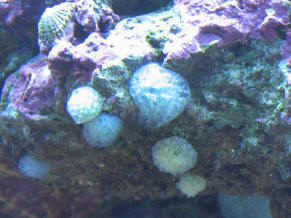
Aquariums were equipped with large air compressors, and were heavily aerated and filtered (primarily with undergravel filters, a norm for some time).Īn ever-growing number of hobbyists experiencing the inconvenience of gathering natural sea water and the concurrent development of analytical chemistry techniques led to research into the chemical composition of sea water. Aquarium literature of the time suggests that the most commonly kept marine fish were the percula clownfish, sergeant major damselfish, small, brackish-water pufferfish and scats, jeweled blennies, and blue damsels.

Natural saltwater contains many unwanted organisms and pollutants.

The clean, sterile tank was viewed as the healthiest.ĭuring the early days of marine aquaria, saltwater was collected at local beaches. Algae, including beneficial types such as coralline algae, were viewed negatively and were generally removed. Bleached coral along with a substrate of coarse crushed coral were the norm. Personal saltwater fishkeeping began on a wider scale in the 1950s, starting with the basic rectangular glass aquariums (usually 20 gallon), still popular today. In 1846, Anna Thynne maintained stony corals and seaweed for almost three years, and was credited as the creator of the first balanced marine aquarium in London. The Aztec Empire had 10 ponds of saltwater aquariums at Texcoco. The first saltwater tanks were Venetian glass jars where the Romans kept anemones outdoors, but these systems were very short lived. 2.2.2 Temperate marine (coldwater marine).The inhabitants of a marine aquarium are often difficult to acquire and are usually more expensive than freshwater aquarium inhabitants. A stable marine aquarium requires more equipment than freshwater systems, and generally requires more stringent water quality monitoring. Marine fishkeeping is different from its freshwater counterpart because of the fundamental differences in the constitution of saltwater and the resulting differences in the adaptation of its inhabitants. FOWLR and reef tanks use live rock, a material composed of coral skeletons harboring beneficial nitrogen waste metabolizing bacteria, as a means of more natural biological filtration. Fish only tanks often showcase large or aggressive marine fish species and generally rely on mechanical and chemical filtration.

Marine aquaria are further subdivided by hobbyists into fish only ( FO), fish only with live rock ( FOWLR), and reef aquaria. A marine aquarium is an aquarium that keeps marine plants and animals in a contained environment.


 0 kommentar(er)
0 kommentar(er)
